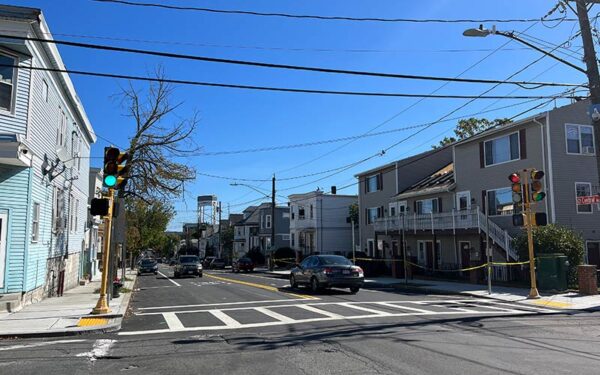
2018 has already been a roller coaster ride for Invenergy, as the company barely avoided a fatal blow to its dirty energy power plant proposal.
We’re barely a month into 2018, and the Invenergy case has already been a roller coaster. The proposed fracked gas and diesel fuel power plant had come close to a crashing halt but managed to narrowly avoid a total disaster.
Back in December, the Energy Facility Siting Board scheduled a “Show Cause Hearing” for the end of January, at which Invenergy would have had to show why its request for a permit to build should not be suspended. The Siting Board was concerned about two lawsuits Invenergy had pending before the Federal Energy Regulatory Commission (FERC), and about uncertainties stemming from a purported contract that Invenergy had signed with a faction of the Narragansett Indian Tribe to provide backup water for its proposed power plant.
Invenergy Tries a New Tactic
Well aware of the mortal danger another delay could pose should the Siting Board find that its case should indeed be suspended, Invenergy rapidly changed course. On January 22, Invenergy canceled its supposed water contract with the Narragansett Indian Tribe, thereby taking that issue off the table. Two days later, Invenergy voluntarily withdrew one of the pending FERC lawsuits – the one in which Invenergy sought to foist onto families and businesses in Rhode Island and the rest of New England the hundreds of millions of dollars it would cost to connect its power plant to the regional electricity grid. (This lawsuit was the main reason for the Siting Board’s Show Cause Hearing.)
In response, the Siting Board canceled the Show Cause Hearing. And on January 26, it announced a schedule of dates for the Final Hearing in the case, starting on April 11 and running through the summer.
Invenergy Attempts to Save Face
Invenergy’s abrupt move to withdraw a lawsuit it had only just started underscores the magnitude of the public relations disaster that had resulted from its secret (and ham-fisted) attempt to shift interconnection costs to electricity customers. But it also saved Invenergy from what might have been another delay – this one possibly fatal.
On the same day that the Siting Board announced the Final Hearing dates, FERC resolved the second lawsuit involving Invenergy. To no one’s surprise, FERC announced that the rules that apply to every power plant generator in New England also apply to Invenergy. Specifically, FERC ruled that Invenergy would not be allowed to self-build the interconnection and that Invenergy would have to post a multi-million dollar bond to cover those construction costs as soon as it wanted interconnection work to start.
In the midst of the activity relating to Invenergy’s water contract with the Narragansett Tribe and the litigation at FERC, Invenergy defaulted on a mandatory $500,000 tax payment to the Town of Burrillville. The company gave the transparently silly excuse that Burrillville was unfairly litigating against it at the Siting Board. But as the media reported widely, Burrillville has made no secret of its opposition to Invenergy, and Invenergy’s tax agreement with the Town places no limits on what Burrillville is allowed to do with the money. The result is that Burrillville will keep fighting Invenergy, but the company shows itself to be a dishonest player that doesn’t want to keep its promises.
The Good and the Bad for Invenergy
The good news for Invenergy is that it has successfully avoided a near-death experience, and it looks like it will be allowed to move to a Final Hearing in the Siting Board later this year.
The bad news for Invenergy is that almost everything else that has happened recently will hurt the company:
- Last autumn, New England’s regional grid operator, the ISO, disqualified Invenergy from bidding the second turbine planned for its plant into the upcoming auction in which ISO procures electricity from power generators. This underscored just how little New England needs Invenergy’s contentious plant.
- On January 11, Rhode Island Attorney General Peter Kilmartin announced his opposition to Invenergy and his intention to file a “friend of the court” brief in support of CLF’s Superior Court lawsuit challenging the company’s illegal contract to purchase water for its plant from the Town of Johnston.
- Based on public documents, it now appears that Invenergy – originally slated for completion in 2019 – cannot be operational even in 2021, as it has most recently promised the Siting Board. This is not just terrible public relations for Invenergy (although it certainly is that, too). This further shows how un-needed this fossil fuel power plant really is.
It seems Invenergy is coming to a crossroads. If it wants to proceed with its project, Invenergy will be required to post multi-million dollar bonds before it obtains necessary permits – or push the start date of its project into 2022, 2023, or beyond. As more and more renewable energy comes online, the arguments in favor of Invenergy’s dirty, outdated energy – weak as they have been all along – become less and less persuasive.
The bottom line for CLF and Rhode Island residents is that our fight against this fracked gas and diesel oil plant is not yet over.



